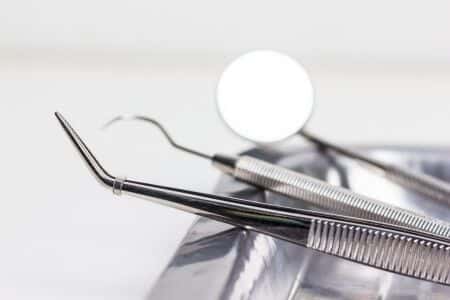Orthodontics Expert Discusses Inappropriate Treatment for Jaw Misalignment
Updated on
This case involves a middle-aged patient in Massachusetts who was referred to the defendant orthodontist for treatment of a gap between his front teeth that he wanted to close. At his initial orthodontic consultation, the orthodontist noted that the patient had a “crooked smile,” or misalignment of his upper and lower jaw. The patient had not noticed this before, and this was not the reason for him seeking orthodontic treatment. The defendant orthodontist convinced him that he could close the gap between his front teeth, as well as level out his smile through the use of orthodontic implants anchored directly into his bone. The implants were placed, and remained in the patient’s jaw bones for several years before a review of the treatment was initiated by the orthodontist. The orthodontist, noting the patient’s dissatisfaction with the results of the initial treatment, devised a non-surgical revision procedure utilizing splint therapy. The patient underwent this therapy for a year before he sought treatment from another orthodontist in response to lackluster results and increasing pain. The patient eventually underwent surgical treatment for his jaw misalignment, which was allegedly the most appropriate treatment from the outset of care.
Question(s) For Expert Witness
1. Do you agree that non-surgical correction of a jaw misalignment in a patient utilizing an orthodontic bone anchor may be contraindicated in this scenario?
Expert Witness Response E-009640
 As part of any decision being made on the validity and reliability of a particular treatment choice, a comprehensive orthodontic records appointment should be carried out including the following items: extraoral and intraoral photographs, maxillary and mandibular models of the patient's teeth, gingival tissue, and bone, a cephalometric x-ray and appropriate evaluation of this cephalometric x-ray, a panoramic x-ray, a full mouth series of x-rays to more clearly define the patient's dental condition and - in this particular case - a PA cephalometric x-ray which is used to evaluate any dental and/or skeletal discrepancies and asymmetry from a "front to back" dimension. Since the treatment rendered was not initially the focus of the patient's chief complaint of a small gap in his teeth, it is difficult to say with conviction that the care rendered here was not appropriate. However, it is definitely a strong possibility that this treatment was contraindicated based on the summary provided, especially if the tests listed above were not undertaken before treatment was administered.
As part of any decision being made on the validity and reliability of a particular treatment choice, a comprehensive orthodontic records appointment should be carried out including the following items: extraoral and intraoral photographs, maxillary and mandibular models of the patient's teeth, gingival tissue, and bone, a cephalometric x-ray and appropriate evaluation of this cephalometric x-ray, a panoramic x-ray, a full mouth series of x-rays to more clearly define the patient's dental condition and - in this particular case - a PA cephalometric x-ray which is used to evaluate any dental and/or skeletal discrepancies and asymmetry from a "front to back" dimension. Since the treatment rendered was not initially the focus of the patient's chief complaint of a small gap in his teeth, it is difficult to say with conviction that the care rendered here was not appropriate. However, it is definitely a strong possibility that this treatment was contraindicated based on the summary provided, especially if the tests listed above were not undertaken before treatment was administered.
About the author
Joseph O'Neill
Joe has extensive experience in online journalism and technical writing across a range of legal topics, including personal injury, meidcal malpractice, mass torts, consumer litigation, commercial litigation, and more. Joe spent close to six years working at Expert Institute, finishing up his role here as Director of Marketing. He has considerable knowledge across an array of legal topics pertaining to expert witnesses. Currently, Joe servces as Owner and Demand Generation Consultant at LightSail Consulting.
Subscribe to our newsletter
Join our newsletter to stay up to date on legal news, insights and product updates from Expert Institute.
Sign up nowFind an expert witness near you
What State is your case in?
Subscribe to our newsletter
Join our newsletter to stay up to date on legal news, insights and product updates from Expert Institute.



